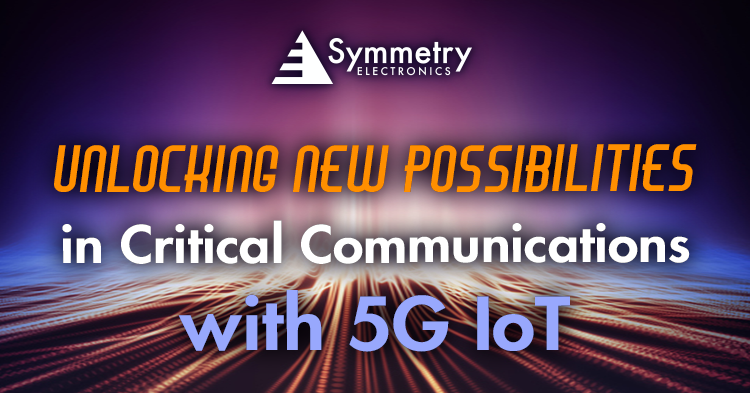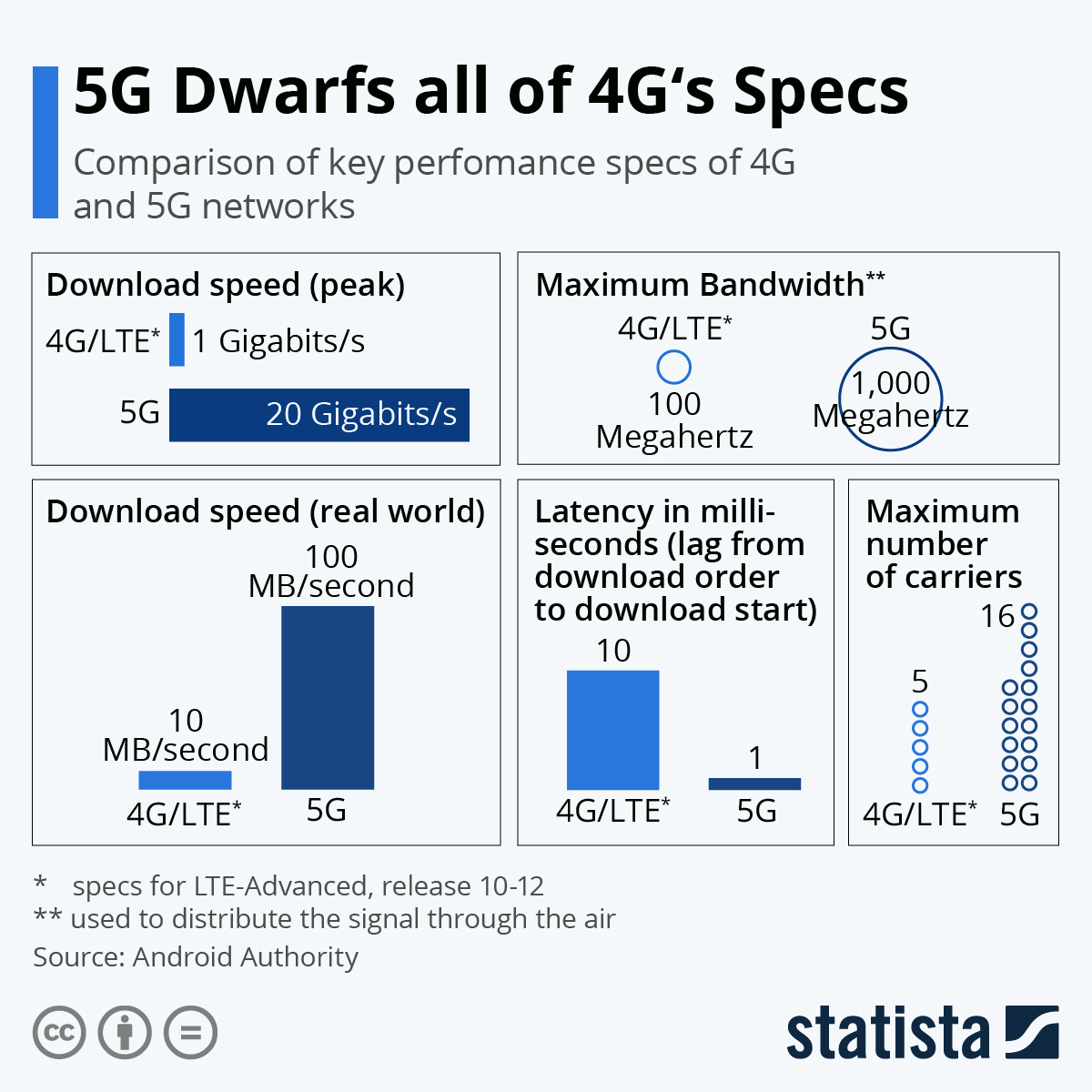- Home
- Symmetry Blog
- Unlocking New Possibilities in Critical Communications with 5G IoT
Unlocking New Possibilities in Critical Communications with 5G IoT
About Jari Haiston
.png)
Effective communication plays a vital role in critical operations across various industries. Mission critical communication applications are software or platforms specifically designed to facilitate efficient and reliable communication in critical or emergency situations. These applications are typically used by organizations and industries where reliable communication is essential for the safety, security, and coordination of operations.
According to Global Newswire, the mission critical communication market was valued at $17.03 billion in 2022 and is expected to grow at a CAGR of 8.6% to $27.87 billion in 2028. As technology continues to advance, the convergence of 5G and the Internet of Things (IoT) will revolutionize the landscape of critical communications. The integration of 5G and IoT is unlocking new possibilities and transforming the way critical communications are established, enhancing efficiency, safety, and overall effectiveness.
What is 5G IoT?
In simple terms, 5G IoT enables a massive network of interconnected devices to communicate seamlessly and efficiently through 5G infrastructure. These devices, ranging from sensors and actuators to smart appliances and industrial machinery, can collect and exchange data in real-time, enabling new levels of automation, control, and insight across various industries. Global Newswire also reports that the global 5G IoT market is expected to grow by over $77 billion during 2023-2027.
By leveraging the power of 5G IoT, businesses can unlock new opportunities, improve operations, and deliver enhanced services and experiences to customers.
What Are Mission Critical Communications Applications?
Mission critical communication applications are software applications or platforms that facilitate secure and reliable communication among individuals or groups in critical situations. These applications are designed to support the needs of professionals working in emergency services, public safety, defense, and other industries where effective communication is crucial for the success of missions and operations.

What Are Mission Critical Communications Applications?
Mission critical communication applications are software applications or platforms that facilitate secure and reliable communication among individuals or groups in critical situations. These applications are designed to support the needs of professionals working in emergency services, public safety, defense, and other industries where effective communication is crucial for the success of missions and operations.
Examples of mission critical communication applications include:
- Dedicated radio systems used by emergency responders (such as police, fire, and medical services)
- Military communication platforms
- Incident management software
- Specialized communication applications used in industries like oil and gas, transportation, and utilities.
Harnessing Enhanced Connectivity with 5G IoT
In comparison to 4G, the deployment of 5G networks presents a significant leap in connectivity. Among a litany of features, 5G is enhancing connectivity (Figure 1) by enabling faster data transmission and lower latency. By leveraging the power of 5G, critical communication systems can provide seamless connectivity for real-time information that shares instant decision-making and adaptively responds in emergency situations. With the ability to support a massive number of IoT devices simultaneously, 5G IoT networks ensure reliable and uninterrupted communication even in high-density environments.
Here are some key features and benefits of 5G:
- Faster Speeds: 5G promises significantly faster data speeds than its predecessors, with peak speeds reaching up to 10 gigabits per second (Gbps). This allows for faster downloads, smoother streaming of high-definition content, and improved overall network performance.
- Lower Latency: 5G networks offer lower latency, which is the time it takes for data to travel between devices. With reduced latency, there is a minimal delay in transmitting and receiving data, enabling real-time and responsive applications like autonomous vehicles, remote surgery, and immersive gaming.
- Enhanced Capacity: 5G networks can support a significantly higher number of connected devices simultaneously. This increased capacity is essential for handling the growing number of Internet of Things (IoT) devices, smart city infrastructure, and other connected technologies.
- Massive Machine-Type Communications (mMTC): 5G enables efficient communication between a vast number of devices, supporting applications that require a large-scale deployment of IoT devices, such as smart grids, industrial automation, and smart agriculture.
- Ultra-Reliable Low Latency Communications (URLLC): 5G networks provide highly reliable and low-latency communication, making it suitable for critical applications that demand uninterrupted connectivity, such as remote control of machinery, emergency response systems, and public safety services.
- Network Slicing: 5G introduces the concept of network slicing, which allows network operators to create multiple virtual networks tailored to specific use cases. Each network slice can be optimized to meet the unique requirements of different applications, ensuring efficient resource allocation and quality of service.
- Improved Coverage: 5G networks are designed to offer better coverage, including improved signal penetration in buildings and wider availability in rural areas, when compared to previous generations. This increased coverage helps ensure a consistent and reliable connection for users across different locations.
- Enabler for New Applications: 5G technology opens up possibilities for various innovative applications and services, including augmented reality (AR), virtual reality (VR), connected vehicles, smart cities, remote surgery, Internet of Things (IoT), and much more.

5G IoT Security
When it comes to critical communications, reliability and security are of utmost importance. 5G IoT networks offer enhanced security features, including advanced encryption algorithms and authentication mechanisms, safeguarding sensitive data and preventing unauthorized access. Furthermore, the robustness of 5G infrastructure ensures uninterrupted communication, even during times of network congestion or interference, providing a resilient communication framework for critical operations.
Integrating 5G IoT into Critical Communication Applications
IoT has revolutionized connected devices by enabling the collection and analysis of vast amounts of data in real time. By integrating 5G networks with IoT device, critical communication systems can harness enhanced situational awareness and improved decision-making this combination provides. For instance, IoT sensors can provide valuable data on environmental conditions, equipment performance, and resource utilization, enabling proactive maintenance and optimizing operational efficiency.
During emergency situations, every second counts. The integration of 5G and IoT enables real-time monitoring and tracking, enhancing emergency response capabilities. IoT devices can be deployed in various scenarios, such as wearable sensors for firefighters, drones for search and rescue missions, and smart infrastructure for disaster management. With 5G's high-speed connectivity and low latency, critical information can be transmitted instantly, aiding in the coordination of emergency teams and saving valuable time and lives.
How is 5G IoT Transforming Public Safety?
Public safety agencies heavily rely on effective communication to ensure the safety and security of communities. 5G IoT solutions provide a wide range of applications, from smart surveillance systems and connected vehicles to intelligent traffic management and incident response systems. These technologies enable seamless coordination between different agencies, facilitate real-time information sharing, and support predictive analytics for crime prevention and efficient resource allocation.
The convergence of 5G and IoT is revolutionizing critical communications, unlocking new possibilities for seamless connectivity, enhanced reliability, and improved response capabilities. With faster data transmission, lower latency, and increased capacity, 5G IoT networks provide a solid foundation for transforming the way critical operations are conducted across various industries. As this technology continues to advance, we can expect even more innovative applications that will revolutionize critical communications, making our world safer and more connected than ever before.
Extending 5G IoT Benefits Beyond Critical Communications
The benefits of 5G IoT extend far beyond mission critical communication applications and offer immense potential for a wide variety of industries. With its faster speeds, lower latency, enhanced capacity, and network slicing capabilities, 5G IoT can revolutionize sectors such as healthcare, transportation, manufacturing, agriculture, and more.
The ability to connect and monitor numerous devices in real-time opens up endless possibilities for efficiency, automation, and innovation. If you’re a developer that is interested in leveraging the power of 5G IoT and embark on a successful development journey, our team of Applications Engineers experts in IoT, IIoT, and wireless technologies. Consultation is free and available throughout your design cycle. Embrace the future of connectivity and realize ensure the successful deployment of your 5G IoT device design. Contact Symmetry Electronics today!
